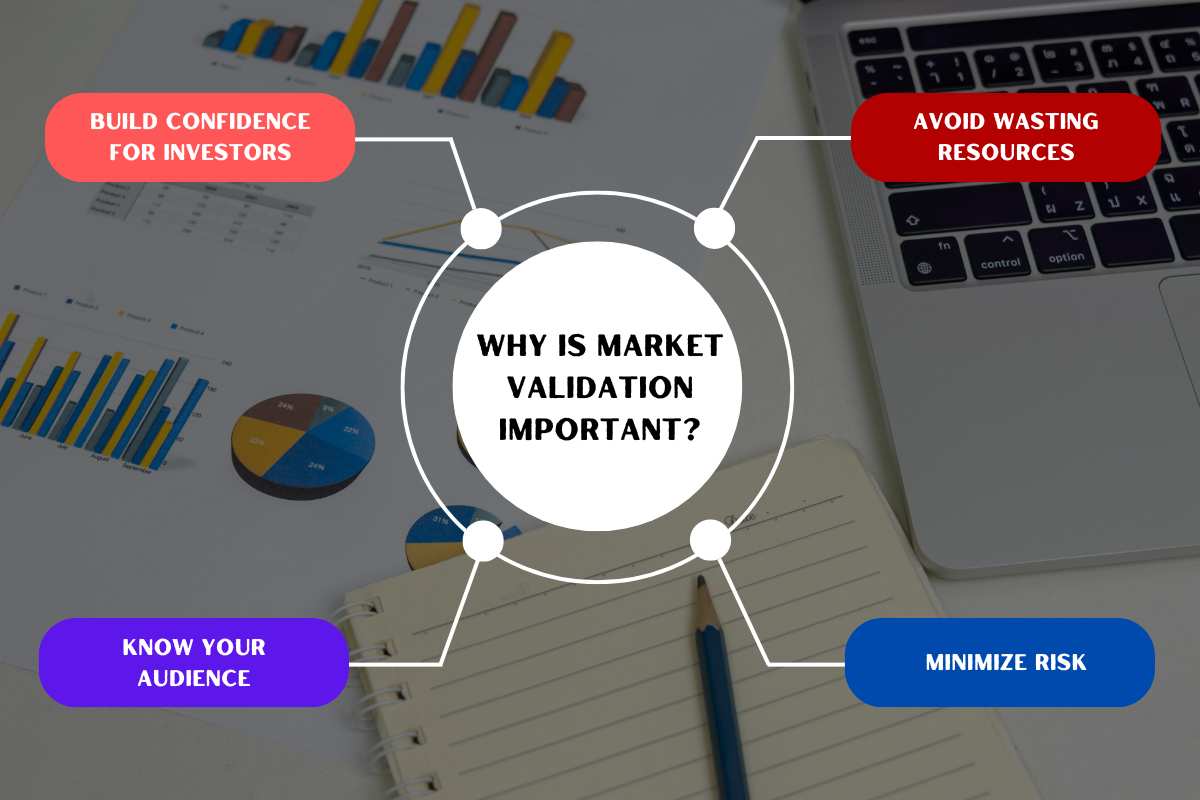Have you ever thought you had a brilliant business idea, only to find out later that it didn’t quite hit the mark with customers? It’s a common story. Research shows that up to 90% of startups fail, and many of them fail because they didn’t properly validate their market before diving in. So, what’s the secret to avoiding this fate?
This article will focus on market validation and how it helps a business or a startup maintain a consistent upward graph.
What is Market Validation?

In simple terms, market validation is the process of testing your business idea to see if there is actually demand for it. Before you spend money and time developing your product, you want to know that people will buy it. Market validation involves getting feedback from real potential customers to understand if they’re interested in your product if it solves their problems, and if they would pay for it.
Rather than building something and hoping it will sell, market validation helps you gather concrete proof that your product has what it takes to succeed. It’s a way of making sure you’re on the right track before you go all in.
Why is Market Validation Important?

If you skip validating the market, you’re taking a huge risk. Think about it, if you pour your resources into creating something that no one really wants, you’re setting yourself up for disappointment. But when you validate your market first, you’re reducing that risk.
Here’s why market validation is crucial for any business:
- Avoid Wasting Resources: When you validate your market, you’re able to determine whether your idea has real potential. This helps you avoid wasting money on a product that no one’s interested in.
- Minimize Risk: Launching any business is risky, but by validating the market, you can lower that risk. You’re testing out your idea before you invest too much time or money into it.
- Know Your Audience: Validating the market helps you better understand your customers. You’ll learn what they like, what they don’t, and what they’re looking for. This gives you the chance to improve your product before launching it full scale.
- Build Confidence for Investors: If you plan to seek funding or partners, showing that you’ve done the work to validate your idea will build trust with potential investors. They’ll be more likely to back you when they see you’ve taken steps to prove there’s real demand.
How to Validate Your Market
Now that you know what market validation is and why it matters, let’s talk about how to actually do it. Here are some simple steps you can take to get started:
1. Define Your Target Market
Before you can validate your idea, you need to know exactly who your customers are. Are they young professionals? Parents? Business owners? Knowing your audience helps you figure out what they need, what problems they face, and what solutions they’re looking for.
2. Create a Simple Version of Your Product
It’s not necessary to launch a fully polished product right away. In fact, you don’t need the final version at all. Instead, create a simple version, called a Minimum Viable Product (MVP), that shows the core idea of what you’re offering. This could be a prototype, a beta version of the software, or even a landing page outlining your product. The goal is to give people something they can try out or learn about to see if it excites them.
3. Reach Out and Get Feedback

Once you have your MVP, start talking to potential customers. Ask them questions about your idea. Is it something they would use? Does it solve a problem for them? Would they pay for it? Getting honest feedback is key to understanding if your product is on the right track. Use surveys, interviews, or even social media to gather opinions.
4. Test With Small Groups
One way to validate your market is by testing with small groups first. For example, you could create a crowdfunding campaign to see if people are willing to pay for your product upfront. If they are, that’s a strong signal that there’s demand. If not, you’ll know that your idea needs more work before it can succeed.
5. Analyze What You’ve Learned
After gathering feedback, take a step back and analyze the results. Are there common themes in what people are saying? Did they express excitement, or did they seem indifferent? This feedback is gold, it will guide you in refining your product and strategy.
6. Iterate Based on Feedback
Don’t be discouraged if your initial idea isn’t perfect. Market validation is an ongoing process. Use the feedback you get to make improvements. Test your product again, refine it based on what you’ve learned, and keep checking to ensure you’re meeting your customers’ needs.
Conclusion
In the end, market validation is a crucial step in building a successful business. It helps you understand whether people actually want what you’re offering before you invest heavily in it. By listening to your target audience, testing your product, and refining it based on their feedback, you’ll be in a much stronger position to succeed. So take the time to validate your market, it’s a small step that can make a huge difference in the long run.
Also Read: Mastering the Product Development Process: A Comprehensive Guide to Bringing Ideas to Market
Frequently Asked Questions
Q1). Can market validation work for service-based businesses?
A1). Yes, services can be validated through trial offers, free consultations, or beta versions.
Q2). How long does market validation take?
A2). It typically takes a few weeks to a couple of months, depending on the product and feedback.
Q3). What if I already have a small group of loyal customers?
A3). Even loyal customers need their interest validated for new products or ideas.


















